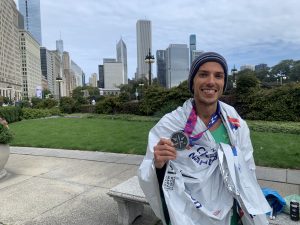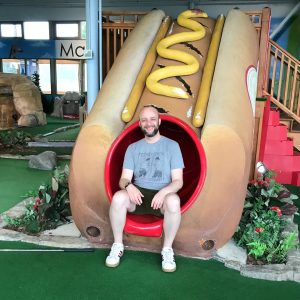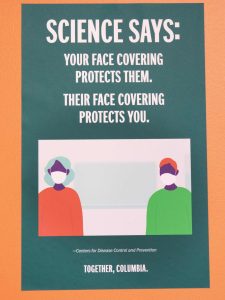By Ed Finkel, Chicago’s New Communities Program
Adults of Puerto Rican heritage who live in Humboldt Park have Type 2 Diabetes at thrice the average national rate, or about 21 percent of the population, according to research performed from 2002-06 by Sinai Urban Health Institute.
To combat this scourge – and its accompanying conditions like blindness, kidney failure and the need for amputation – Diabetes Block Captains this summer will start going door-to-door as part of Block-By-Block: The Greater Humboldt Park Community Campaign Against Diabetes.
The campaign, funded through the National Institutes for Health, is aimed at intervening to create awareness and education, improve early diagnosis, and provide resources for self-management for those who have Type 2 Diabetes or are at high risk for contracting it.
“The community needs more information about the risks,” said Digna Gerena, a block captain for Block-By-Block who will help raise awareness, and a diabetic herself. “It has different effects on everyone. I feel hyper to do some exercise, I am thirsty all the time, and sometimes I want to sleep. Some people are always hungry.”
On April 23, about 100 stakeholders gathered to celebrate the opening of the Greater Humboldt Park Community Diabetes Empowerment Center, which will serve as a hub for the Block-By-Block effort and provide treatment and information for patients, their families and other community members.
The ribbon-cutting ceremony for the center, located at 2753 W. Division St., brought together the partners to the effort: Puerto Rican Cultural Center, Pueblo Sin Fronteras, The Greater Humboldt Park Community of Wellness, Rush University Medical Center, Sinai Urban Health Institute, and Norwegian American Hospital.
“This is a community-run center working in partnership with the hospitals,” said Jaime Delgado, project director for Sinai. “This is a symbol of what people can do working together as a community. … This facility is set up to be multi-purpose.”
Delgado elaborated on the purpose during the quarterly Community of Wellness meeting on May 19. The four block captains in Block-By-Block will be going door-to-door with notepad computers to capture client data, which will then be forwarded to Rush and analyzed. They expect about 1,300 to 2,000 of those surveyed to be diagnosed with diabetes.
The empowerment center will attempt to bring a new level of cultural competency to outreach efforts, Delgado said. “We don’t want to impose this on people; we want an empowering model,” he said. “If we just tell them our way … it’s not a reciprocal communication.”
The center will have exercise programming, educational videos, a specialized nurse on hand, and a demonstration kitchen with a full-time dietician providing cooking advice for diabetics and those at risk.
Dr. Steven K. Rothschild of Rush University Medical Center read a bittersweet note at the center’s opening in April.
“It’s a really exciting day. We’ve been working a long time to make this possible,” he said. “The reason behind this project isn’t such a joy. Too many people in Humboldt Park have diabetes and complications from diabetes. For that reason, I wish I wasn’t here today.”
The center will serve as the home base of Block-By-Block, Rothschild said.
“The campaign is being born today,” he said. “Block-By-Block happens out there. You talk to your neighbors, the people you work with, the people you go to church with. The minute we pin one of these buttons on you, you’re deputized.”
Ald. Roberto Maldonado (26th) said he hoped the center would improve people’s self-management of diabetes and praised the partners to the effort.
“You don’t feel any symptoms until it’s too late … and you have to have your toes amputated,” he said. “Without your commitment, without your sacrifice, without your perseverance, this never would have happened.”
Speaking shortly before the May 19 Community of Wellness meeting, held at the center, Executive Director Juana Ballesteros described it as “a monumental and innovative effort. It tackles diabetes not using the traditional medical model. To get at the root cause, you need to work at the community level and in people’s daily lives, to understand what’s impacting them.
“The work being done in Humboldt Park, in general, is taking a holistic, wellness, prevention approach,” she said. “That ultimately will have a much bigger impact. It’s not giving people a hand-out, it’s giving them a hand up.”
“If they don’t have Medicare or insurance, we will send them to a free clinic,” said Gerena, a healthcare research assistant at Rush, in addition to being a block captain. “I didn’t take [proper tests in time], believe me. It’s not a game. It’s so serious.”
Attendees to the ribbon-cutting had the opportunity to tour the new center during an open house held after the remaining speakers, who included Ballesteros; Emma Lozano, executive director of Pueblo Sin Fronteras; Alan Channing, CEO of Sinai Health System; Myrna Pedersen, interim administrator at Norweigan American Hospital; Dr. Steve Whitman, director of Sinai Urban Health Institute; and Jose E. Lopez, executive director of the Puerto Rican Cultural Center.






Be First to Comment